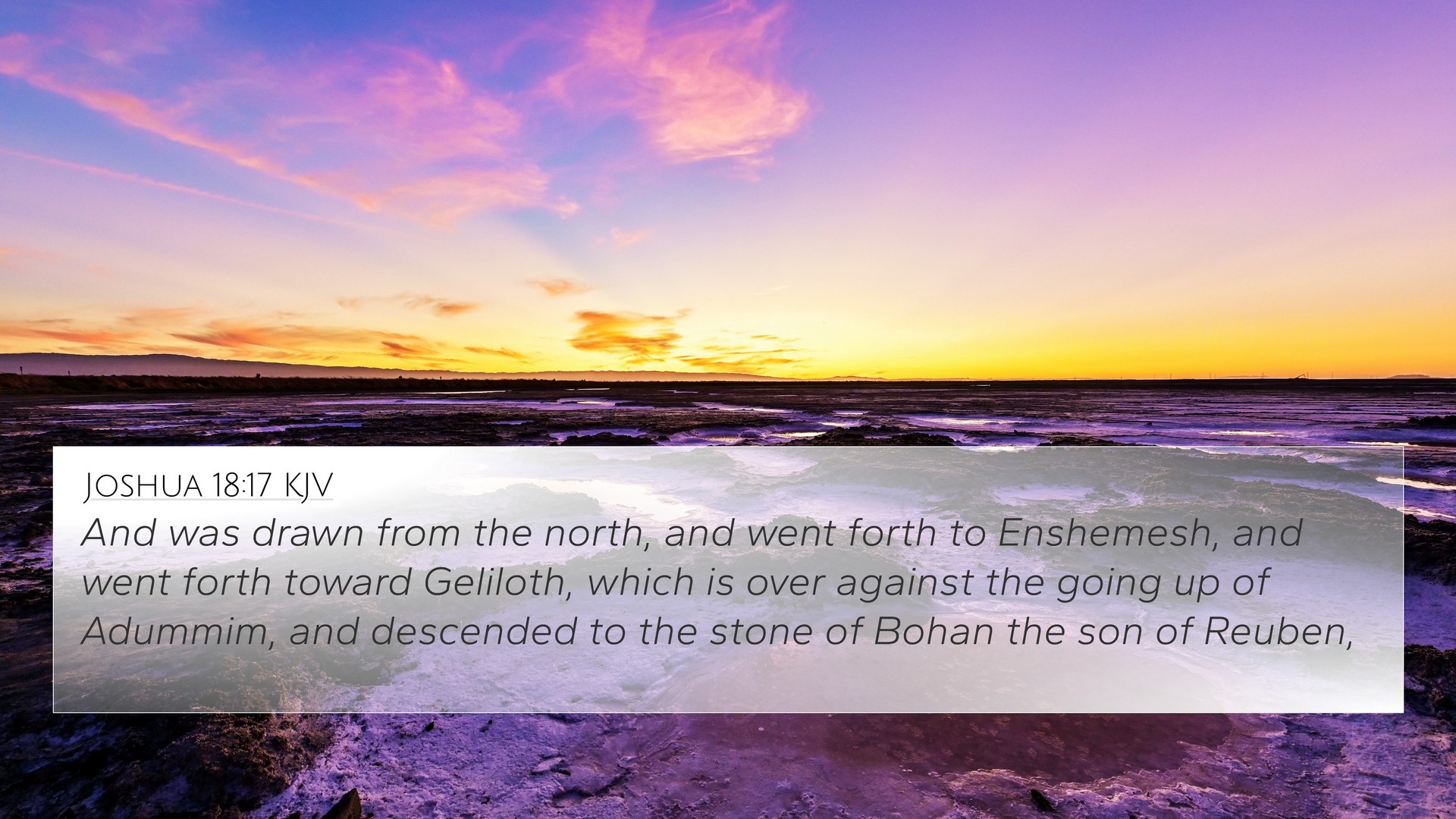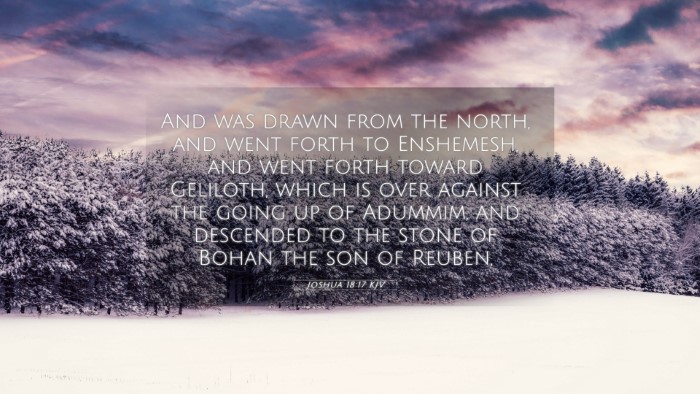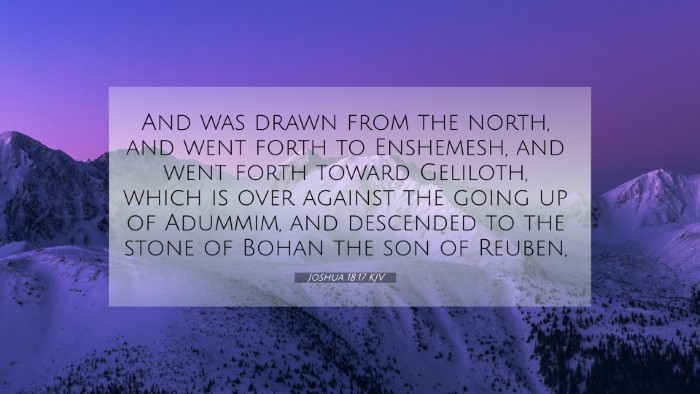Understanding Joshua 18:17
Verse: "And the border went down from Hinnom, and the valley of the son of Hinnom, and the south side of the Jebusite; the same is Jerusalem. And the border went down to the end of the mountain that lies before the valley of Hinnom westward, which is at the end of the valley of the giants northward."
Summary of Joshua 18:17
This verse describes part of the division of the land among the tribes of Israel, specifically outlining the borders of the territory. The detailed geographical references not only reflect a literal mapping of the land but also impart spiritual significance regarding the heritage and promises given to the people of Israel. The mention of Hinnom and the valley of the son of Hinnom evokes historical contexts connected to judgment, sacrifice, and redemption throughout biblical narratives.
Commentary Insights
-
Matthew Henry:
Matthew Henry emphasizes the importance of geography in understanding the history of the Israelites. He notes that the identification of specific places helps believers appreciate the fulfillment of God’s promises. The mention of the valley of Hinnom is seen as a contrast between the past practices of idolatry and the present day’s need for holy living.
-
Albert Barnes:
Albert Barnes discusses the significance of the Jebusites and mentions that Jerusalem, a pivotal location, is central to the narrative of Israel's conquest. The borders highlighted in this verse are foundational to later events, particularly the establishment of Israel's monarchy and God’s dwelling among His people.
-
Adam Clarke:
Adam Clarke provides a historical background, noting that the valley of Hinnom was known for its dark past, which involved child sacrifices to idols. Therefore, understanding the land's boundaries brings to light the redemptive work God does in transforming places of curse into areas of blessing for His people.
Cross-References and Thematic Connections
Joshua 18:17 can be cross-referenced with several other verses to enhance understanding:
- Jeremiah 7:31: This verse mentions the valley of Hinnom and the abominations committed there.
- 2 Kings 23:10: This verse addresses the reform by King Josiah regarding Topheth in the valley of Hinnom.
- Matthew 5:22: Jesus refers to "the hell of fire," linking back to the valley of Hinnom’s historical context.
- Romans 15:4: Emphasizes that the Old Testament was written for our instruction, affirming the importance of understanding such passages.
- Revelation 21:2: The new Jerusalem symbolizes a culmination of the promises started in the land division.
- Psalm 27:6: Reflects trust in God’s protection, resonating with Israel’s identity in their land.
- Hebrews 11:9-10: Speaks to the faith of Abraham and his descendants in the promise of the land, tying back to Joshua’s work.
- Luke 19:41-44: Jesus cries over Jerusalem, linking with its historical significance as seen in this verse.
- Isaiah 66:24: References the valley of Hinnom as a metaphor for eternal judgment, connecting the past to eschatological themes.
- Acts 1:8: The empowerment of witnessing from Jerusalem highlights the central place Israel holds in God’s plan.
Thematic Bible Verse Connections
The passage connects to several themes within Scripture:
- Restoration: The transformation of places associated with judgment to areas of God’s blessing.
- Heritage: The importance of land and heritage in understanding God's promises to His people.
- Judgment and Redemption: The juxtaposition of past failures with current grace as seen throughout the history of Israel.
Conclusion
Joshua 18:17 serves as a reminder of the sovereignty of God in leading His people to the land promised to them. The cross-references and commentaries provide a broader understanding of how this verse interconnects with the overall narrative of Scripture and emphasizes the significance of carefully interpreting and linking various biblical texts for deeper insight into God's Word.



